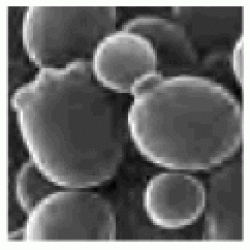Source Institutions
Source Institutions
Add to list Go to activity
Activity link broken? See if it's at the internet archive

In this activity, learners observe what happens when yeast cells are provided with a source of food (sugar). Red cabbage "juice" will serve as an indicator for the presence of carbon dioxide. Learners will observe how carbon dioxide gas is given off by yeast cells, as indicated by turning the mixture bright pink. This activity is broken up in three parts or sessions: making the indicator (can be done in advance), demonstration of cabbage juice indicator, and conducting the investigation.
- 5 to 10 minutes
- 1 to 2 hours
- $1 - $5 per group of students
- Ages 8 - 14
- Activity, Demonstration, Experiment/Lab Activity, Lesson/Lesson Plan
- English
Quick Guide
Materials List (per group of students)
- Tsp of baking soda
- Vinegar, a few drops
- 2 cups, 9-oz clear plastic
- 2 spoons or coffee stirrers
- 1/2 to 1 cup warm water
- Clear, resealable plastic bag, 4 in. x 6 in.
- Handful of raw, finely sliced red or purple cabbage
- Tsp of dry yeast
- Tsp of sugar
Subjects
-
Life Sciences
- Cells
-
Diversity of Life
- Protists and Fungi
-
Ecology
- Energy Flow and Chemical Cycles
-
Physical Sciences
- Energy
-
Chemistry
- Chemical Reactions
- Acids and Bases
- Oxidation-Reduction Reactions
-
The Nature of Science
-
The Scientific Process
- Conducting Investigations
- Gathering Data
- Formulating Explanations
- Communicating Results
-
The Scientific Process
Informal Categories
- Food and Cooking
- Nature and Environment
Audience
To use this activity, learners need to:
- see
- see color
- touch
Learning styles supported:
- Involves teamwork and communication skills
- Involves hands-on or lab activities
Other
Components that are part of this resource:
This resource is part of:
Access Rights:
- Free access
By:
- Moreno, Nancy P. ; Tharp, Barbara Z. ; Dresden, Judith
Rights:
- All rights reserved, Baylor College of Medicine, 2011
Funding Sources:
- National Institute of Environmental Health Sciences (NIEHS) of the National Institutes of Health (NIH), R25 ES06932
- National Institute of Environmental Health Sciences (NIEHS) of the National Institutes of Health (NIH), R25 ES010698
